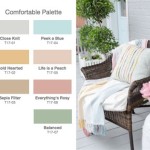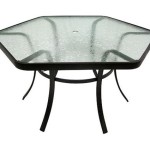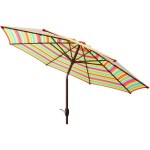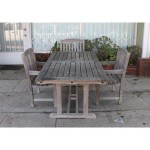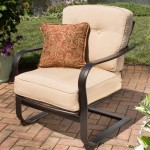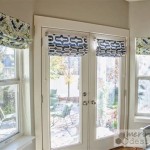What Color Patio Umbrella is Best for Sun Protection?
Selecting a patio umbrella involves more than just aesthetics. One of the primary considerations for many purchasers is the level of sun protection it offers. While factors like material construction and fabric density play significant roles, the color of the umbrella's fabric also influences its ability to block harmful ultraviolet (UV) rays. Understanding the science behind color absorption and reflection can help inform a decision regarding the best color for sun protection in a patio umbrella.
The effectiveness of a patio umbrella in mitigating sun exposure is directly linked to its Ultraviolet Protection Factor (UPF). UPF measures the amount of UV radiation that penetrates the fabric and reaches the skin. A fabric with a UPF of 50, for instance, allows only 1/50th of the sun's UV rays to pass through it. The color of the fabric impacts this rating, albeit in conjunction with other material properties.
The Science of Color and UV Absorption
Color, in its essence, is the result of how an object interacts with light. When light shines on an object, some wavelengths are absorbed, while others are reflected. The reflected wavelengths are what the human eye perceives as color. Darker colors, such as black and navy blue, absorb a larger spectrum of light wavelengths, including UV rays. Conversely, lighter colors, like white and yellow, reflect more light. However, reflection does not necessarily equate to superior UV protection.
The absorption of UV radiation by darker colors transforms the radiation into heat. This is why dark-colored objects tend to feel hotter under direct sunlight. While the heat absorption might make the shaded area under a dark umbrella slightly warmer, the amount of UV radiation reaching the skin is significantly reduced. Lighter colors, on the other hand, reflect much of the visible light, but may not be as effective in blocking UV radiation. This is because the UV radiation might still penetrate the fabric or reflect onto surrounding surfaces.
It's important to recognize that the density and composition of the fabric itself are critical factors. A tightly woven fabric, regardless of color, will generally provide better UV protection than a loosely woven fabric. This is because fewer gaps exist for UV rays to pass through. Similarly, fabrics treated with UV-absorbing chemicals can significantly enhance their protective capabilities, regardless of their color. Therefore, color is only one piece of a larger puzzle when assessing the sun protection offered by a patio umbrella.
The interplay between color and material is complex. A light-colored, tightly woven fabric with a high thread count can offer comparable, or potentially even better, UV protection than a dark-colored, loosely woven fabric. The key is to prioritize fabrics that are specifically designed and tested for UV resistance, as indicated by their UPF rating.
Examining Specific Colors and Their Effectiveness
While the general principle of darker colors absorbing more UV radiation holds true, it's beneficial to examine the practical implications for specific colors commonly used in patio umbrellas.
Black: Black is renowned for its ability to absorb light and, consequently, UV radiation. Black patio umbrellas generally provide excellent sun protection, absorbing a significant portion of the harmful rays before they can reach the shaded area. However, the substantial heat absorption can make the space under the umbrella noticeably warmer, especially in hot climates. This increased heat should be considered when selecting a black umbrella.
Navy Blue: Similar to black, navy blue is a dark color that effectively absorbs UV radiation. While it might not absorb quite as much as black, it still offers superior sun protection compared to lighter colors. Navy blue also tends to be a more aesthetically versatile option, complementing a variety of outdoor decor styles. The heat absorption, while present, is generally less pronounced than with black.
Red: Red is a vibrant color that also demonstrates good UV absorption capabilities. It absorbs a wide range of wavelengths and can offer respectable sun protection. The intensity of the red hue can influence its effectiveness, with darker, more saturated reds generally performing better than lighter shades. Red provides a visually striking option for a patio umbrella while offering substantial sun protection.
Green: Different shades of green offer varying degrees of sun protection. Darker greens, such as forest green or olive green, tend to absorb more UV radiation compared to lighter greens like lime or pastel green. While green umbrellas can be visually appealing and blend well with outdoor environments, it's essential to consider the specific shade and fabric construction to ensure adequate UV protection.
White: White reflects the majority of light wavelengths, including visible light and some UV radiation. However, reflection alone does not guarantee effective sun protection. UV rays can still penetrate white fabric, particularly if it is loosely woven or thin. White umbrellas tend to keep the shaded area cooler but often require a higher UPF rating due to their lower inherent absorption capabilities.
Yellow: Similar to white, yellow reflects a substantial amount of light. Yellow umbrellas can create a bright and cheerful atmosphere, but they typically offer less sun protection than darker colors. The UV protection of a yellow umbrella depends heavily on the fabric's density and any UV-protective treatments applied.
Beige/Tan: Beige and tan are neutral colors that fall somewhere in the middle of the spectrum in terms of UV absorption. Their effectiveness depends on the specific shade and the fabric's properties. Darker beige or tan umbrellas will offer better protection than lighter shades. These colors are often chosen for their ability to blend seamlessly with various outdoor settings.
Beyond Color: Other Crucial Considerations
While color plays a significant role, several other factors contribute to the overall sun protection effectiveness of a patio umbrella.
Fabric Density and Weave: The density of the fabric and the tightness of the weave are paramount. A tightly woven fabric, regardless of color, offers better UV protection than a loosely woven one. Look for umbrellas made from fabrics with a high thread count. Close-knit fabrics minimize the gaps through which UV rays can penetrate.
Fabric Material: The type of fabric used in the construction of the umbrella directly impacts its UV protection capabilities. Fabrics like polyester and acrylic are known for their durability and UV resistance. Some fabrics are specifically treated with UV absorbers to enhance their protective properties.
UPF Rating: Always check the UPF rating of the umbrella's fabric. A higher UPF rating indicates greater protection from UV radiation. Look for umbrellas with a UPF of 30 or higher. A UPF rating of 50+ offers excellent protection against harmful UV rays.
Umbrella Size and Coverage: The size of the umbrella also affects its ability to provide adequate shade and protect from the sun. Larger umbrellas offer a wider coverage area, ensuring that more people are shielded from direct sunlight. Consider the size of the patio or outdoor space and choose an umbrella that provides sufficient shade for the intended users.
Frame Durability: While not directly related to sun protection, the durability of the umbrella's frame is important for its overall longevity. A sturdy frame can withstand wind and other environmental factors, ensuring that the umbrella remains functional and provides reliable shade for years to come. Aluminum or steel frames are good choices for durability.
Regular Maintenance: To maintain the UV protection capabilities of a patio umbrella, regular cleaning and maintenance are necessary. Dirt, dust, and mildew can accumulate on the fabric, reducing its effectiveness. Clean the umbrella regularly with mild soap and water. Store the umbrella properly when not in use to protect it from damage and prolong its lifespan.
In summary, while darker colors generally offer better UV absorption, selecting a patio umbrella for sun protection involves a holistic evaluation. Fabric density, material composition, UPF rating, umbrella size, frame durability, and regular maintenance all contribute to the overall effectiveness. By carefully considering these factors, one can choose a patio umbrella that provides both stylish shade and reliable protection from the sun's harmful rays.

The Best Color Patio Umbrella To Block Sun Worst Room

Which Color Umbrella Is Effective Against Sunlight

What Is The Best Color For My Patio Umbrella Sunnydaze Decor

The 3 Best Patio Umbrellas And Stands Of 2024 Reviews By Wirecutter

Which Color Umbrella Is Effective Against Sunlight

Canopy Colour Guide Find The Best Colours For Your Parasol

The 3 Best Patio Umbrellas And Stands Of 2024 Reviews By Wirecutter

The Best Color Patio Umbrella To Block Sun Worst Room

Best Choice Products 7 5ft Outdoor Solar Patio Umbrella For Deck Pool W Tilt Crank Led Lights

The Best Color Patio Umbrella To Block Sun Worst Room

